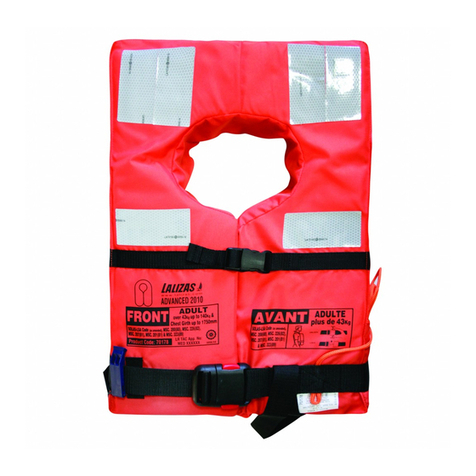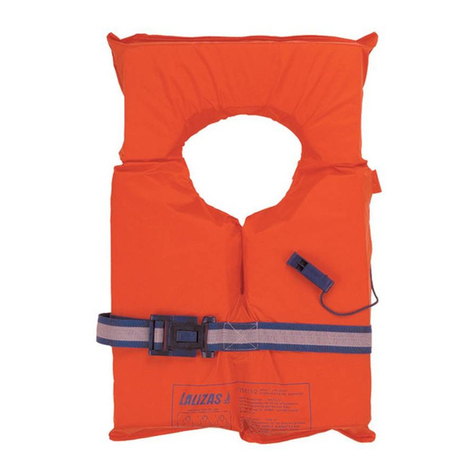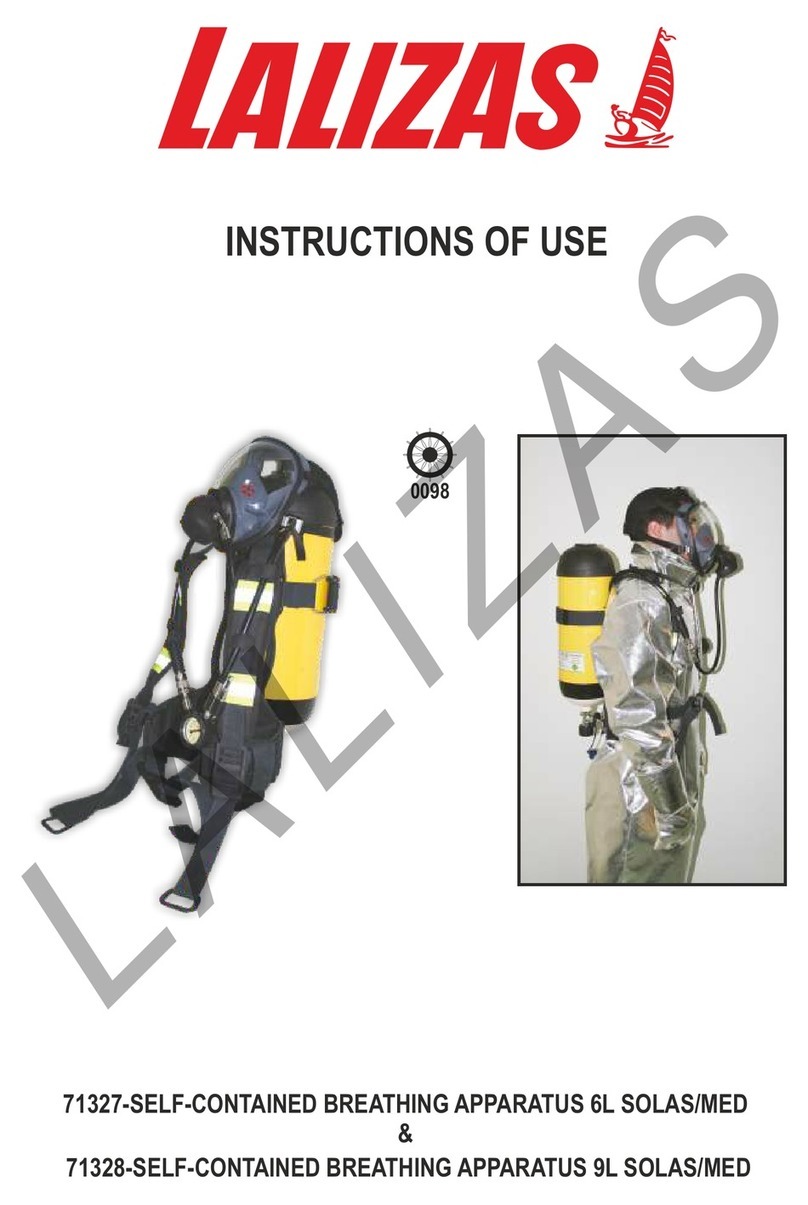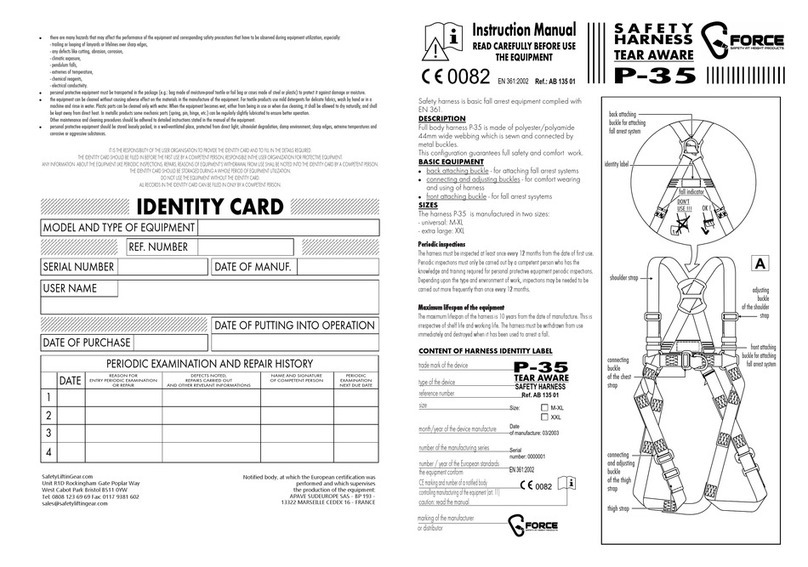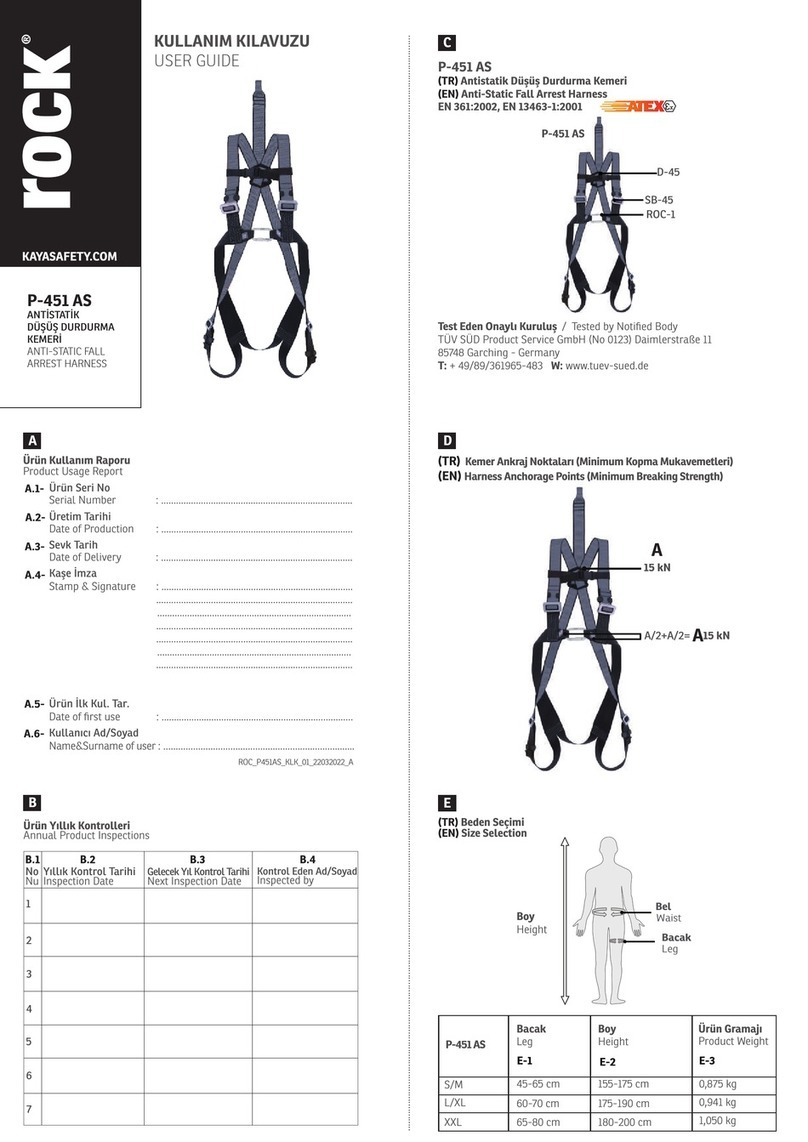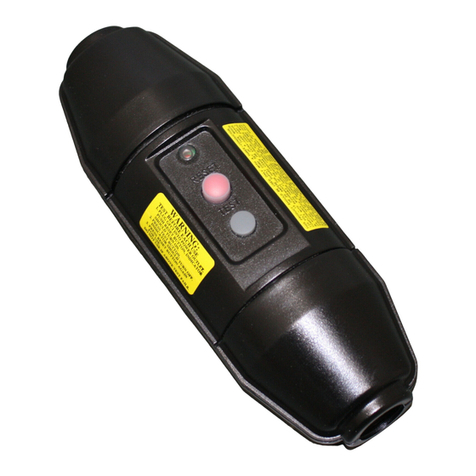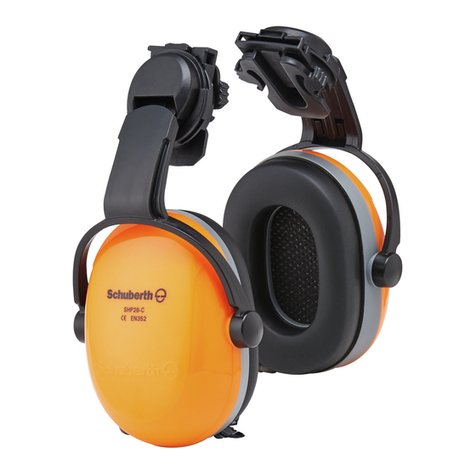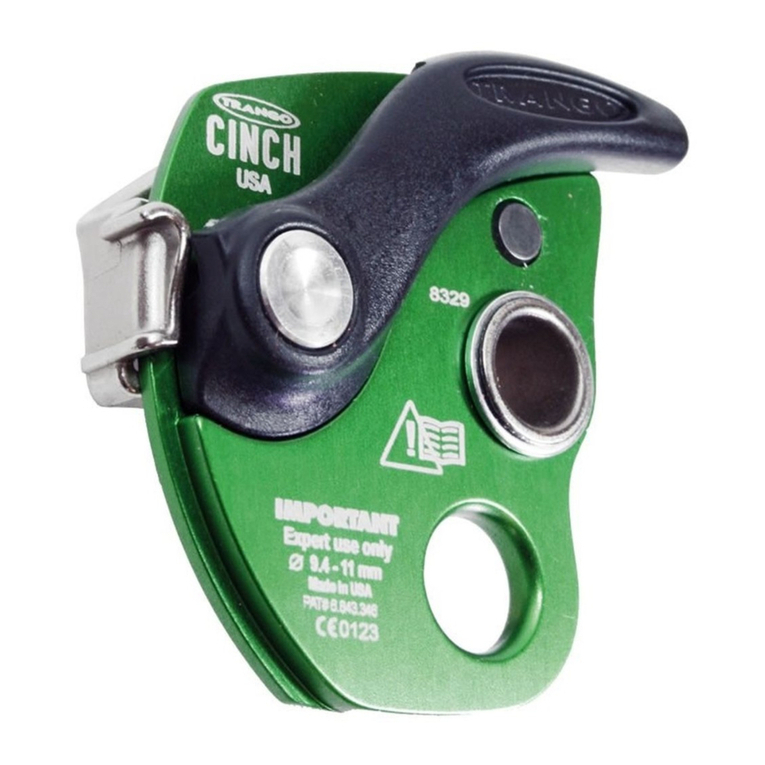
4
INFLATED DONNING INSTRUCTIONS
Inatable lifejackets can be very difcult to don when fully inated. Deate through the Oral Tube until enough gas has escaped to don. See DEFLATION
INSTRUCTIONS. Don as described above and re-inate orally as described below.
INFLATION INSTRUCTIONS
1. Manual Ination - To inate, grasp the 2Manuallevers and pull sharply downwards. This will open the mechanism cover ap and activate the manual ination lever.
2. Automatic Ination - When armed, the 2 automatic Ination Mechanisms will be activated when the device is totally immersed in the water. Depending upon
temperature, the device will obtain full buoyancy within 5 to 10 seconds. It is recommended that the user regard the automatic system as a backup and always be
prepared to pull the Manual levers upon immersion.
3. Oral Ination - The Oral & Relief Tube (Double) is located on both ination chambers. Each tube has one ination valve and one relief valve preinstalled. Before
inating, without CO2, you MUST rst open the oral ination cap. Grasp the Oral Tube and bring to mouth. Blow air through the Oral Tube until the Inatable Chamber
is rm. The oral tube valve will automatically re-seal. The relief valve will automatically remove the excess air so as to maintain the chamber with the needed buoyancy.
4. Cold Ination - Oral Ination may be required in addition to manual or automatic ination if chamber/s is not rm due to cold temperatures at or below 4 oC. Ination
time using CO2 gas will be longer at these temperatures. Activation of automatic system may also be slower. Always be prepared to use the manual ination system!
See FREEZING TEMPERATURES on page 9.
3. Other Ination Precautions
Caution: Never inate this lifejacket with a pump or air-compressor.
If the chamber/s becomes soft due to CO2 permeance, Oral Ination will be necessary to maintain full buoyancy. Permeation loss is greater when the device is inated with
CO2 than with air, and earlier replenishment by means of the oral ination system will therefore be necessary.
INSPECTING YOUR LIFEJACKET FOR DAMAGE
Make sure that the lifejacket is free from rips, tears or punctures. This type of damage on the outside covering indicates that the Inatable Chamber/s may have been
exposed to potentially damaging elements. If these defects expose the yellow inatable chamber/s material, discontinue use of the lifejacket until you have the lifejacket
inspected by an authorized repair facility. If these defects are noticed but the yellow inatable chamber/s material is not exposed, the Inatable Chamber/s should be
checked for leaks.
IMPORTANT NOTICE - WARNINGS
Caution - Do not use as a cushion. This is not a lifejacket until it is fully inated. Train yourself in the use of this lifejacket. Full performance may not been achieved using
waterproof clothing or in other circumstances.
Trapped air and carried load impair the performance of the 33gr or 60gr CO2 gas cylinder.
Once lifejacket is used, then it should be immediately serviced and immediately the 2 cylinder CO2 to be replaced with a brand new cylinder CO2.
Gas Cylinders are dangerous goods and they shall be kept away from children and not misused.
Regarding the cylinders attached to the inator mechanism, please perform visual periodic inspection. In case there is any of the below:
• dent
• scratches
• corrosion on the cylinder
• or even used and not replaced,
then contact a LALIZAS authorized Service Station, in order to perform service of the lifejacket.
For the LALIZAS SOLAS models with zipper closure, please perform visual periodic inspection:
Preparing zip for repacking:
- Ensure that the zip teeth are separated all around the lifejacket.
- Slide the zip around to the right end as worn.
- Zip carefully, helping with your other hand, till the left edge.
The zipper has precut teeth to different determined location by manufacturer and these areas are protected /hidden by a black hook and loop patch. It is forbidden to cut
or damage additional zipper teeth.If that happens then the lifejacket should be discarded.
In case the zipper has dents, cracks, missed teeth, damaged zipper slider or the zipper slider is stuck then contact a LALIZAS authorized Service Station, in order to
perform service of the lifejacket
Make sure that LALIZAS lifejacket light SOLAS and LALIZAS whistle are attached and that retroreective tapes SOLAS have no signs of deterioration.
All damage to the materials, such as tears, abrasion, cuts on the cloth or webbing, color change or damage to the buckles, that would affect the buoyancy by overheating,
UV sun damage, incorrect storage or use,etc can lead to a life threatening reduction in safety offered by the product. All such products should be removed from use. If in
doubt, contact a LALIZAS certied Service Station.






